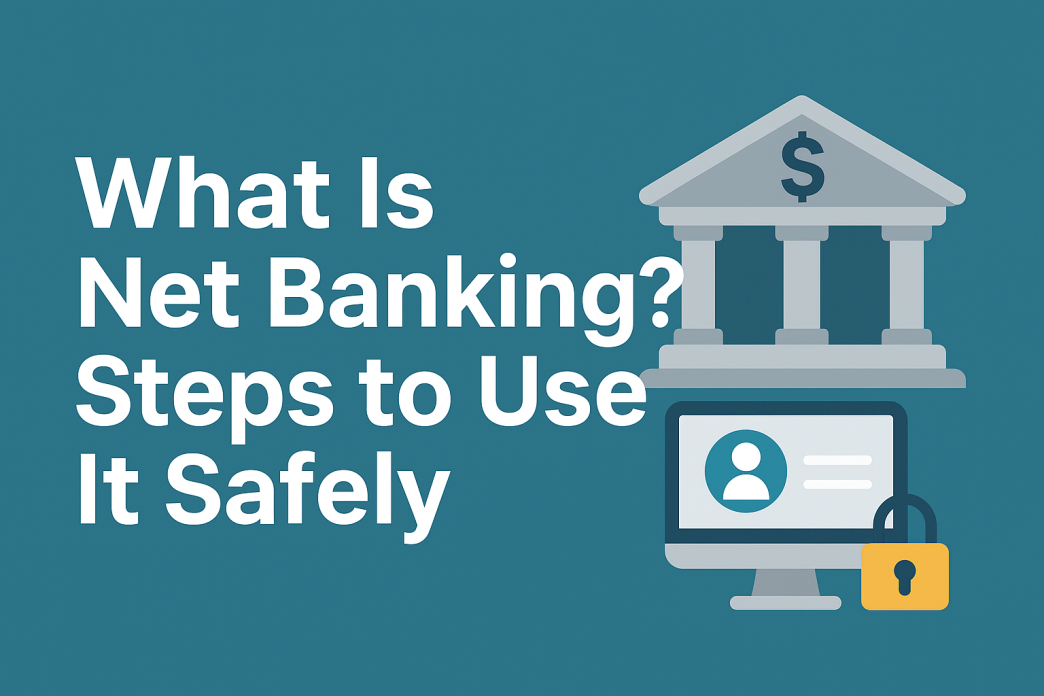What is Net Banking? Steps, Benefits, and Safety Tips Explained, Full details 2025 updated.
What is Net Banking?
In today’s fast-paced digital world, banking is no longer restricted to visiting a branch. Net banking, also known as online banking or internet banking, allows customers to perform a wide range of financial transactions anytime, anywhere, through the bank’s secure website or mobile application.
From checking account balances to transferring money and paying bills, net banking has become a necessity for both individuals and businesses. But with this convenience, it’s equally important to stay alert and keep your transactions secure.
Table of Contents
About Net Banking
What is Net banking? It is a digital service offered by banks that enables customers to manage their bank accounts online without visiting a branch. All you need is an internet connection, a device (computer or smartphone), and your banking credentials.
Common Features of Net Banking
- Fund Transfers – Transfer money to your own accounts, other accounts in the same bank, or to accounts in other banks via NEFT, RTGS, or IMPS.
- Bill Payments – Pay utility bills, credit card bills, and insurance premiums online.
- Account Management – View account statements, check balances, and monitor transactions.
- Service Requests – Request cheque books, update personal details, and open fixed deposits.
Benefits of Net Banking
- 24/7 Accessibility – Conduct transactions anytime without depending on bank working hours.
- Time-Saving – No need to wait in long queues for routine banking tasks.
- Wide Range of Services – From opening deposits to paying taxes, everything is possible online.
- Instant Transactions – Quick transfers through IMPS or UPI integration.
- Environment-Friendly – Reduces the need for paper-based processes.
Steps to Use Net Banking Safely
1. Use Strong Passwords
- Create a unique password with a mix of uppercase letters, lowercase letters, numbers, and symbols.
- Avoid using personal information like birthdates or names.
2. Enable Two-Factor Authentication (2FA)
- Most banks offer OTP-based verification for every transaction — always keep it enabled.
3. Access Only from Secure Devices
- Stay away from public computers or open Wi-Fi when doing banking, they can put your account at risk
4. Keep Your Banking Credentials Private
- Never share your login ID, password, or OTP with anyone, not even bank employees.
5. Regularly Monitor Your Account
- Check your bank statements frequently for unauthorized transactions.
6. Update Software and Apps
- Keep your device’s operating system and banking app updated to protect against security vulnerabilities.
7. Log Out After Each Session
- Make sure to log out of net banking every time, especially if you’re on a shared device.
Risks of Net Banking (If Not Used Safely)
- Phishing Attacks – Fraudsters trick you into revealing personal information.
- Malware – Viruses or spyware can steal your banking credentials.
- Unauthorized Access – Weak passwords or unsafe browsing habits can lead to account breaches.
Final Thoughts
Net banking has revolutionized the way we manage our finances. With just a few clicks, you can send money, pay bills, and track expenses from the comfort of your home. However, its convenience should not make you careless. Following the right net banking safety steps ensures that your online transactions remain secure and your hard-earned money is protected.

